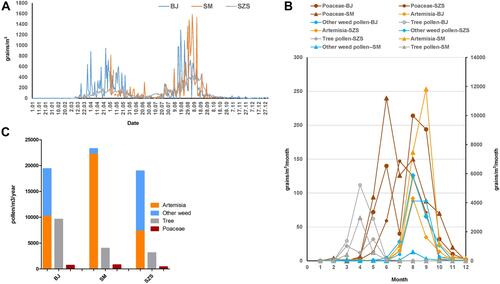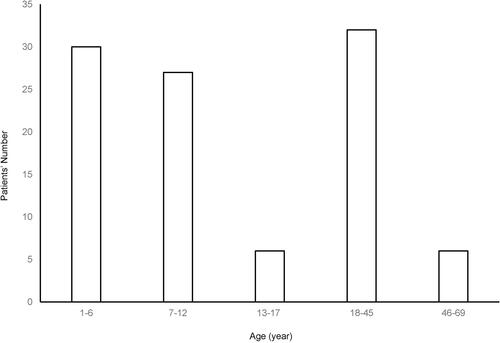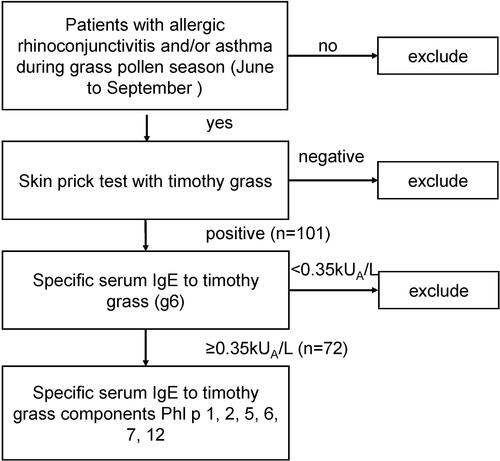Figures & data
Figure 2 Pollen concentration in three areas. Pollen monitoring was performed by a gravitational method using a modified Durham pollen sampler described by Ye.Citation19

Figure 3 The age distribution of patients.

Table 1 Prevalence of Phleum pratense Pollen Components
Table 2 Number of Patients in Relation to IgE Sensitization Pattern to Each Component of Phleum pratense

